Commercial fishing interests and even recreational anglers often bemoan the political creation of Marine Protected Areas around the globe, but the science suggests these sea-life sanctuaries benefit regional fisheries and those who pursue fish for food or for recreation.
According to a new study published by scientists at UC-Santa Barbara and the California Department of Fish and Wildlife, MPAs, while unpopular in many commercial fishing circles because they prohibit fishing and harvest within their boundaries, have an overall positive benefit on regional fisheries, and not just those located within the closed areas.
The study, which focused on spiny lobsters off the coast of southern California, found that lobster populations increased markedly within MPAs. More importantly, lobster populations in adjacent waters outside the MPA boundaries also increased. The increase outside the MPA boundaries is being described as “spillover,” likely due to migration of lobsters from within the MPAs to habitat outside the protected areas.
“The key question is what is the net effect of the reserves on the fishery?” said the study’s lead author Hunter Lenihan, a fisheries ecologist and a professor at UCSB’s Bren School of Environmental Science and Management. “If you take away a certain amount of territory, do you make up for it by this increase in catch through spillover?”
Dan Reed, Lenihan’s colleague, and a research biologist at UCSB’s Marine Science Institute, noted that there has always been a high level of skepticism among academics and commercial fishing interests regarding what overall impact MPAs have on certain species and on harvest numbers. But the new study, he noted, should give commercial fishing interests some peace of mind when it comes to MPAs.
“What we found is that you not only make up for the lost area, but actually enhance the fishery,” Reed says.
The research team conducted the study between 2012 and 2018 at five sites off the coast of Santa Barbara and Goleta. Three of the sites have always been open to commercial lobster fishing, while two sites are part of marine reserves designated in 2012. The team also collected data from commercial fishing landings and from fishing effort as gauged by CDFW. The department designates waters off the California coast into rectangular “fishing blocks,” some of which are included within the MPAs and some that aren’t.
The findings were palpable. Despite a 35 percent reduction in fishing effort (thanks to the protected areas), lobster landings in fishing blocks that were near or that included parts of the MPAs more than doubled.
“This study is one of the first to quantify and document that the establishment of marine reserves actually enhanced catch despite reducing the area that fishermen could actually fish,” Reed says. “Our data suggest that in the case of lobster, the MPAs have the potential to lead to a higher sustainable catch.”
Indeed, the study measured a four-fold increase in lobster density within MPAs and a two-fold increase in lobster biomass within the protected areas.
While the study focused solely on lobsters, the research team did note some direct impacts from the cessation of lobster harvest on the surrounding marine habitat.
“An indirect ecological effect of ceasing to fish lobsters on temperate latitude rocky reefs is an increase in the abundance of macroalgae—specifically giant kelp in the SB Channel—due to the decline of sea urchins, which graze on kelp and are preyed upon by lobsters,” the study reads. “In turn, increased kelp abundance can lead to greater abundances of many species of invertebrates, some of which are lobster prey.”
Of course, lobsters aren’t the only predator that eats invertebrates living among California’s iconic kelp forests. The habitat is also vital to rockfish, giant kelpfish, California sheephead, kelp bass and other fish often targeted by commercial and recreational fishers. The habitat is also home to California sea lions, sea otters and larger, keystone predators like sharks. It would appear that by protecting swaths of habitat from the harvest of a single commercial species (spiny lobsters) that the overall marine habitat within MPAs improves over time, and that the spillover into adjacent waters improves lobster harvest and very likely the harvest of other species (note: Lenihan’s team did not measure the impact of MPAs on any other marine species — only spiny lobsters).
But the creation of protected areas may not be the panacea to large-scale ocean fish replenishment or even ocean fish overharvest. Ray Hilborn, a fisheries biologist with the University of Washington, notes that MPAs may have an immediate positive impact on fisheries in very localized environments, but threats to ocean fisheries come from many sources, not just overharvest.
“The threats to the ocean and its biodiversity are coming from many directions and we may not even know all of them,” Hilborn wrote in the Ices Journal of Marine Science in 2017. “They include global warming, ocean acidification, oil spills, garbage in all forms, microplastics, energy production, invasive species, land based run-off of sediments and agricultural waste and chemicals, marine traffic and illegal and legal fishing.”
In other words, MPAs can be very targeted fixes to very targeted problems. The key to addressing marine health is to consider all the factors that impact fisheries, not just the issue of overharvest.
“The key point I want to make is that stopping legal, regulated fishing is the only thing MPAs can really do to protect the ocean,” Hilborn writes. “They have no proven effect whatsoever on the rest. Moreover, we have a whole range of ways to regulate fisheries that are much more effective than MPAs.”
Lenihan says he largely agrees with Hilborn’s writings, but notes that the creation of a complex network of MPAs that prohibit fishing of any kind could significantly improve certain fish species that are important for commercial use and, frankly, vital in the effort to feed the world.
“We depend heavily on protein from the sea,” Lenihan says. “It makes sense, and I think it’s vital that fishery managers, fishers and science work collaboratively to ensure we’re able to make the most of the fisheries we use. Reserves are good because they remove the ecosystem effects of fishing and allow species to replenish. They do a good job of protecting habitats and restoring ecosystem function.”
He suggests that the network of reserves with open areas in between could be beneficial to commercial fishers that would benefit from the spillover of target species, much like the commercial lobster industry is benefitting off the coast of southern California. Lenihan notes, too, that the shared success of the lobster fishing industry in his area is because his team of researchers worked with the industry, not in opposition to it. In fact, he said, his team was trained by lobstermen on how and where to set traps to ensure the data being provided would be the most helpful.
“What we have is a productive interaction between the (commercial lobster) fishery and the scientists for the benefit of both,” he says.
But is a study on spiny lobsters enough to convince the marine biology world that MPAs are worthwhile political tools to help protect ocean fisheries? Hilborn concedes in his 2017 article that MPAs, if large enough to ensure that all life stages of marine life can be protected from harvest, can increase the abundance of regional fisheries. But he notes, they still don’t address the issue of overharvest — fishing pressure just moves elsewhere.
“If the threat to an area is overfishing, reducing fishing pressure through management is the answer, because MPAs do not reduce, but move fishing pressure,” Hilborn writes. “Where the threat is by-catch of non-target species, whether sharks, birds, mammals or turtles, technical solutions and gear-specific time/area closures have been effective. Where damage to sensitive habitats is the issue, those areas can be closed specifically to the damaging gear. Fisheries management regulations generally recognize the spatial heterogeneity of fish populations and habitats and can be highly selective as to which areas are open to what kinds of fishing at specific times of year.”
That isn’t to say that MPAs don’t have the potential to play a role in fisheries management, Hilborn notes. In fact, they might be the best tools to serve as reference sites for what a healthy ocean habitat might look like in the absence of commercial fish harvest (or overharvest), both for science and for the rest of us, frankly.
“I see a clear role for MPAs as tourist sites and as reference sites for sedentary species,” he writes. “When other forms of fisheries management are not possible but MPAs can be implemented and enforced they can benefit biodiversity and fisheries when serious overfishing is occurring.”
While the UCSB spiny lobster study is encouraging, particularly in a well-used habitat and a diverse fishery like the one off the coast of southern California, it’s clear that Marine Protected Areas are not the “silver bullet” when it comes to ocean fisheries harvest. In order to properly address threats to marine fisheries, larger-scale efforts — both political and scientific — are needed.
But Lenihan remains optimistic that the study’s foundation is solid and could perhaps translate beyond a single marine species in a single location. If fisheries managers around the world worked in collaboration with the commercial fishing industry and with science, the incorporation of a network of MPAs in conjunction with science-based management to encourage sustainable harvest the overall outcome could be beneficial.
Granted, he notes, some species just move around too much — migratory fish that swim long distances are less likely to benefit from a network of MPAs than species that stay close to specific habitats.
“The conceptual network of reserves is a good idea for certain species,” Lenihans says.
Beyond that, it comes back to collaboration and cooperation to address the other issues facing the ocean’s health, as Hilborn notes. “The food produced from the ocean that is lost when large marine areas are closed must inevitably be replaced terrestrially with the associated high environmental costs,” he writes. “Both biodiversity and food security will generally be better served by expanding fisheries management, not by establishing more no-take areas.”




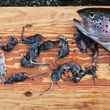






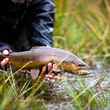




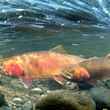
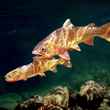



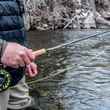
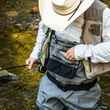



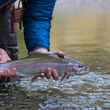




Comments
Daniel casilla replied on Permalink
Is Marc Benioff, CEO of Salesforce, giving money in an any way or form to the University and/ or your program. I am asking because your "science" has become " stenographer" commentary. You even had an article on how dying fish would sequester carbon by going to the bottom of the ocean. It seem to suggest to a lot of people that you favored sea fish over feeding people, jobs or trade. Am I wrong? MPAs in the hisg seas are useless. Biodiversity mainly occurs near or inside the EEZs and even then, there is no certainty that it can help good old fisheries management with new technologies and strict oversight and enforcement ( such as in the USA). There is no-one-size-fits-all. Just ask Ray Hilborn or any honest scientists. You have adhered to a dogma that is financed by anti use money.
Pages